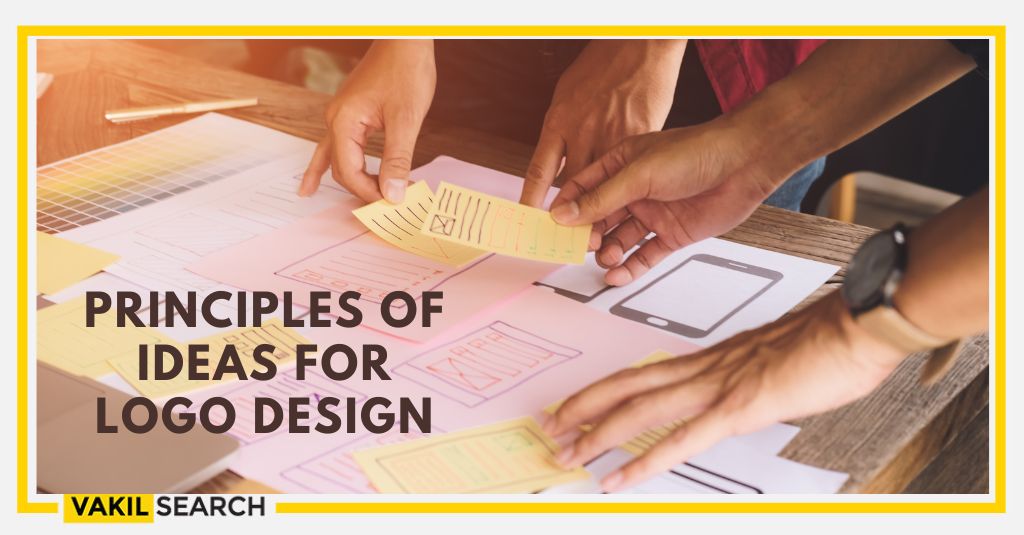A logo's purpose is to reflect the brand to an audience while distinguishing you from the competition. The following logo design guidelines can assist you in this endeavour; continue reading to obtain a better notion about logo design and the key principles of Logo Design.
Introduction
In today’s competitive business landscape, carving out a distinct identity for your company or brand is of paramount importance. This unique identity is often symbolised by a logo, which serves as the visual embodiment of your brand’s values, ethos, and aspirations. As the foremost graphical representation, a logo anchors a company’s brand and becomes the single most visible manifestation of the company within the target market. This article will delve into why having a good logo is crucial, the principles of logo design, and options for obtaining a logo. We will also answer some frequently asked questions.
Why is Having a Good Logo Important?
A logo is a brand’s first impression, acting as a touchpoint that provides instant recognition to your business and sets you apart from others. When customers associate your logo with a good memory or experience, the sight of it can trigger positive emotions that draw them back to your business.
Brand Identity:
A well-crafted logo speaks volumes about your business. It communicates your brand’s personality, core values, and mission. It gives your brand a unique identity in a crowded marketplace.
Professionalism:
A professionally designed logo gives your business a professional look that builds trust. It symbolises your commitment, reliability, and consistency in delivering high-quality products or services.
Differentiation:
In an overcrowded market, standing out is key. A compelling logo can quickly grab viewers’ attention and communicate a company’s core values uniquely.
Brand Loyalty:
As your brand grows, your logo is going to become more familiar to a wide range of consumers, and this familiarity creates the perception of reliability.
Logo Design Principles: Simplicity
When it comes to effective logo design, simplicity is vital. A simple logo design allows for easy recognition and allows the logo to be versatile and memorable. Simplicity makes a logo easy to remember and quickly recognisable. Remember, simple logos are the ones people can recognise as soon as they see them. The simplest logos are the ones people remember the most.
To design a simple logo, you need to strip down your design to its most essential elements. Exclude any unnecessary details and stick to a clean, uncomplicated design. Famous logos like Apple, Nike, and McDonald’s are excellent examples of simple yet incredibly memorable designs.
Logo Design Principles: Memorability
Another essential quality for effective logo design is memorability. An effective logo design should be memorable, and this is achieved by having a simple, yet, appropriate logo. You want to design a logo that will have a lasting impact on potential customers and to do this, you need to create something unique and memorable.
The human brain can recognise and retain simple images quite easily. However, complex designs are often forgotten because they are more challenging for our brains to catalogue. A memorable logo is one that, after seeing it once or twice, a person can easily remember and describe.
Logo Design Principles: Scalability
Scalability is a critical aspect of logo design. A scalable logo performs well whether it’s on a giant billboard or a small social media profile picture. It must be effective at any size.
While designing a logo, consider where and how it will be used. If your logo primarily appears on digital platforms, test how it looks on different devices, including mobile phones, tablets, and desktop computers. If your logo appears in print, make sure it looks as good on a business card as it does on a billboard.
Logo Design Principles: Versatility
A good logo works across a variety of media and applications, which is why versatility is so crucial. The logo should be designed in vector format to ensure it can be scaled to any size without losing quality.
To maintain its versatility, a logo should be able to work in different contexts, different scales, and different backgrounds. This might involve creating different variations of your logo that work for horizontal formats, vertical formats, and even ultra-compact icon formats.
How to Get A Logo Design
There are two main routes you can take when it comes to designing a logo: do it yourself or hire a professional.
Option A: Design Your Logo Yourself
If you decide to design your logo yourself, you should start by brainstorming what you want your logo to convey about your brand. Once you have a clear idea, you can use online design tools like Canva, Adobe Spark, or Looka. These platforms offer a wide array of templates that can serve as starting points for your logo design.
While designing, keep in mind the principles we have discussed: simplicity, memorability, scalability, and versatility. It might take several drafts to come up with a design that encapsulates your brand perfectly. But remember, the process requires patience, creativity, and an open mind.
Option B: Hire a Brand Designer to Create a Logo for You
If you’re not confident in your design abilities or if you simply want a more polished and professional result, hiring a brand designer can be a great option. These professionals have a deep understanding of how design elements work and how to create a design that perfectly encapsulates a brand’s identity.
When hiring a designer, it’s important to look at their portfolio to see if their style aligns with your vision. Be clear and specific about your expectations and the message you want your logo to convey.
Conclusion
In the world of branding, a good logo is a visual shortcut that symbolises your brand’s identity, mission, and value you bring to the table. Its importance cannot be overstated, as it serves as the face of your company and the first point of contact for most potential clients. By understanding and implementing fundamental design principles like simplicity, memorability, scalability, and versatility, you can create or commission a logo that stands the test of time.
FAQs on Key Principles of Logo Design
What design elements are used in a logo?
Logos can include a variety of elements such as symbols or icons, typography, and colours. The choice of these elements should reflect the brand's identity and target audience.
What are the essential elements of a well-designed logo?
A well-designed logo should be simple, memorable, timeless, versatile, and appropriate. It should effectively convey something about the company's character or values.
What are the golden rules of logo design?
The golden rules of logo design include: making it simple, making it memorable, making it enduring, making it versatile, and making it appropriate. Every effective logo design should aim to adhere to these principles.
Read more:-









